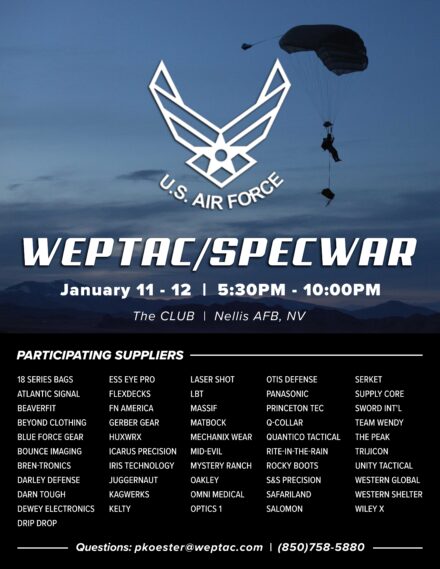
Additional vendors. See you there!

Additional vendors. See you there!
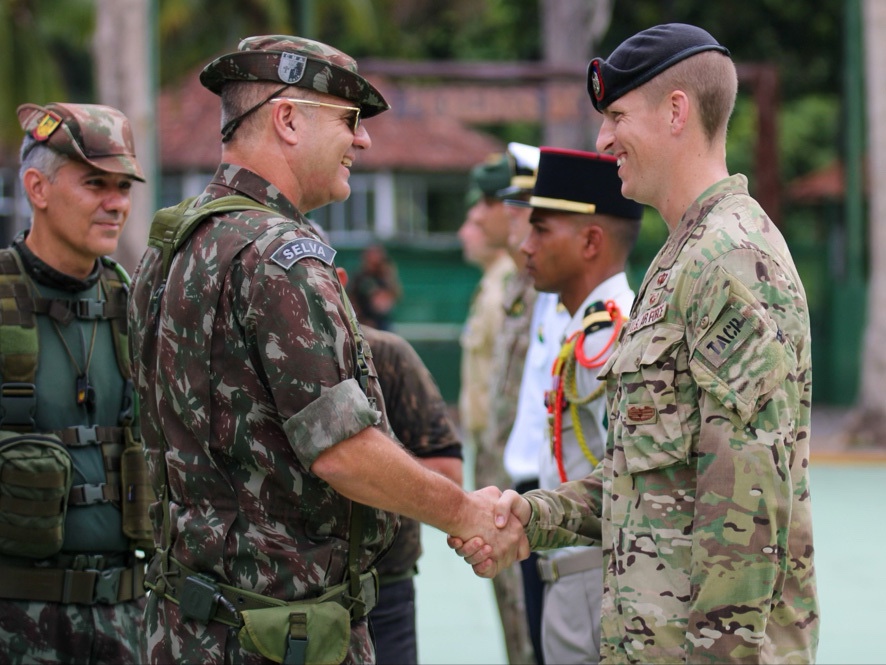
MANAS, Brazil – For New York Air National Guard Tech Sgt. Jeremy Miter, adapting to the heat and humidity of the Amazon basin was the toughest part of the six weeks he spent at Brazil’s jungle warfare school from the end of September until mid-November.
“Once we got into the jungle, it was a whole other level of heat,” Miter said. “The triple canopy rain forest keeps the heat in and all around you. It creates a pressure cooker.”
Despite the heat, Miter became the fifth New York National Guard member to graduate from the course.
CIGS — the acronym for the school’s name in Portuguese, Centro de Instrução de Guerra na Selva — conducts the course for foreign military personnel in Manas, the capital of Brazil’s Amazonas state.
The Brazilians run a 10-week course for their own Soldiers.
New York Soldiers and Airmen have been attending the school since 2019 as part of the State Partnership Program relationship between Brazil’s military and the New York National Guard.
Army National Guard Sgt. William Dunn, a member of the 101st Expeditionary Signal Battalion, was to attend with Mitre but could not because of a medical issue.
To operate in the heat and humidity, the students from India, France, Spain, Portugal, Paraguay, Uruguay and Argentina, and two other Americans from the 7th Special Forces Group learned how to stay hydrated.
Miter said students begin the course with physical fitness tests and swimming in uniform with combat gear.
The next step is surviving in the jungle. The students learn what to eat and not eat and how to find drinkable water and shelter.
“They put us out in the woods for 48 hours on our own to survive without food and only the water that you bring with you,” he said.
“I don’t think anybody ate for the entirety of the survival event,” Miter recalled. “Luckily, it rained at the end.”
As a joint tactical air controller assigned to the 274th Air Support Operations Squadron, part of the 107th Attack Wing, Miter supports ground troops by calling air strikes.
Miter, 33, joined the New York Air National Guard in 2006 and served as a firefighter at the 109th Airlift Wing until becoming a JTAC in 2010.
He deployed to Syria in 2019 and to the Horn of Africa in 2021.
In civilian life, Miter is assigned to the Syracuse Fire Department’s Engine 3.
Miter was picked to attend the course because “he has the mental focus and physical strength” to succeed, said New York Air National Guard Command Chief Master Sgt. Denny Richardson.
Swimming is central to the training, Miter said. The students learned to use the rivers to move around. Using makeshift rafts, they would swim with their rucksacks full of equipment. They also learned how to use boats to infiltrate an area.
The round-the-clock training kept the 25 class members so tired that nobody had the energy to worry about the caiman — Brazil’s version of the alligator — or piranhas in the river, he said.
Students also learned how to navigate in the dense jungle using terrain association and practiced rappelling from helicopters.
Since most of the students were from special forces units, that was simply refresher training, Miter said.
Working with 25 soldiers from different countries who didn’t speak the same language was challenging, but they managed to find ways to communicate.
“The exchange of knowledge between us and Brazil was great. Plus working with soldiers from other countries you don’t normally work with was valuable,“ Miter said.
By Eric Durr, New York Air National Guard
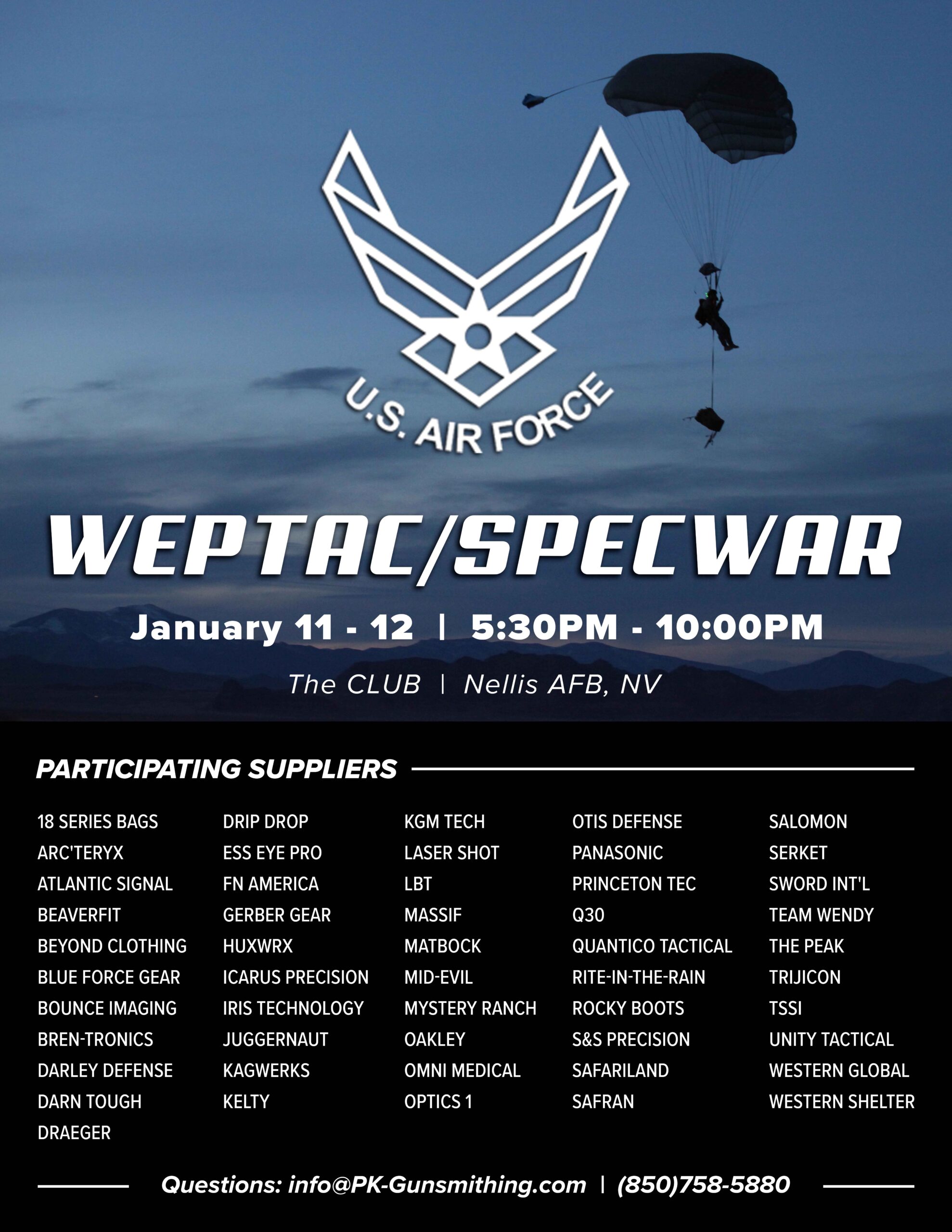
See you at WEPTAC / AF SPECWAR vendor nights at Nellis AFB, Jan 11-12, 1730 to 2200. Open to Military and Government Civilians.
BIRMINGHAM, Ala. —
U.S. Air Force Pararescuemen executed the Fall 2022 Special Operations Center for Medical Integration and Development culminating field training exercise in Birmingham, Alabama, Nov. 17, 2022.
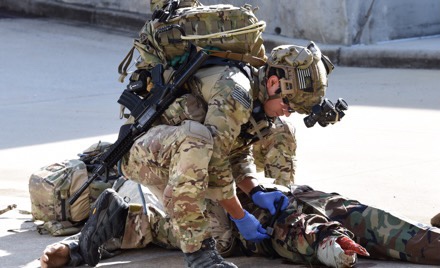
Training provided the pararescuemen various controlled scenarios to enhance medical readiness, whether in day-to-day operations or in austere, resource-limited locations.
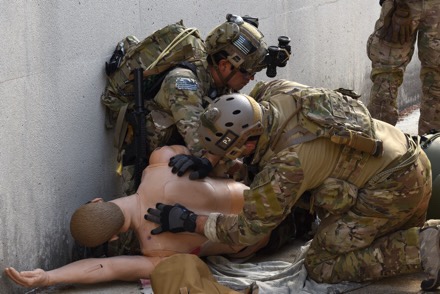
The culminating FTX was the capstone to a two-week-long certification course where students applied skills learned in civilian hospital care to tactical scenarios.
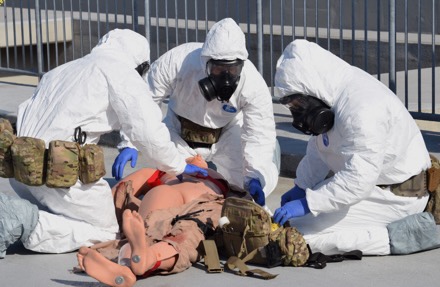
SOCMID is embedded with the University of Alabama at Birmingham Hospital. Their vision is to establish the premier trauma skills, sustainment and recertification platform for pararescuemen and Special Operations Independent Duty Medical Technicians.
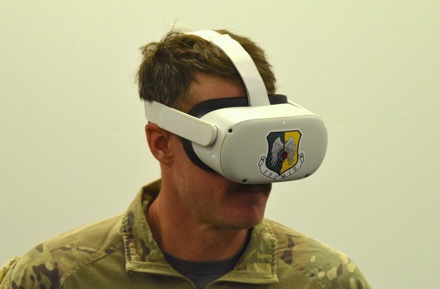
The partnership with UAB Hospital is beneficial to students as it is a level one trauma center, allowing them to conduct clinical rotations in operating and emergency rooms.
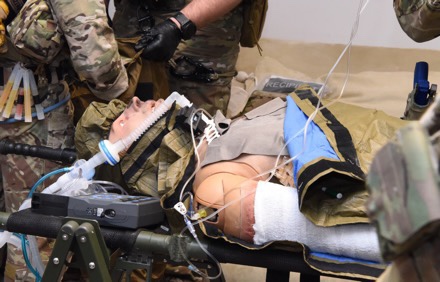
“The civilian-military partnerships are important to our sustainment program,” said U.S. Air Force Col. Clayton Rabens, 24th Special Operations Wing command surgeon. “Some of these skills are perishable, so having partnerships like we do with UAB allows us to replicate scenarios and solve problems hands-on, then apply them to tactical scenarios for students to practice.”
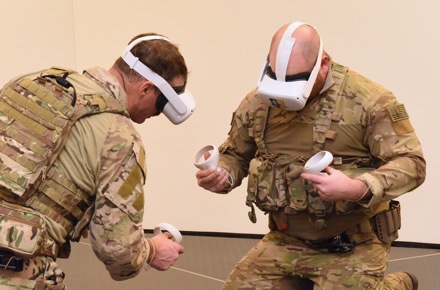
Some of the other training was completed with virtual reality headsets. Specific VR training helps students refine cognitive skills in approaching medical problem sets.
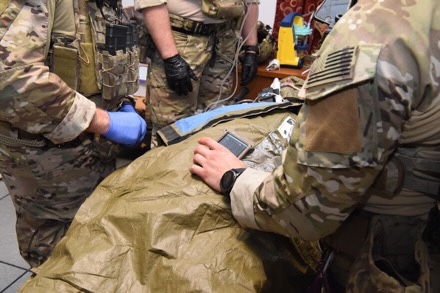
Additionally, prolonged casualty care scenarios allowed pararescue teams to work through casualty care with new skillsets learned while attending SOCMID real-time with wounded mannequins.
“We want to ensure they’re prepared to meet real-world missions,” added Rabens. “The high stress environment they encounter during the FTX ensures we are able to meet that goal.”
By 1st Lt Victor Reyes, 24 SOW Public Affairs
Members of the Air Force Special Warfare Human Performance Support Group’s Research Flight recently published an article in a peer-reviewed journal, “Force plate vertical jump scans are not a valid proxy for physical fitness in US special warfare trainees.”
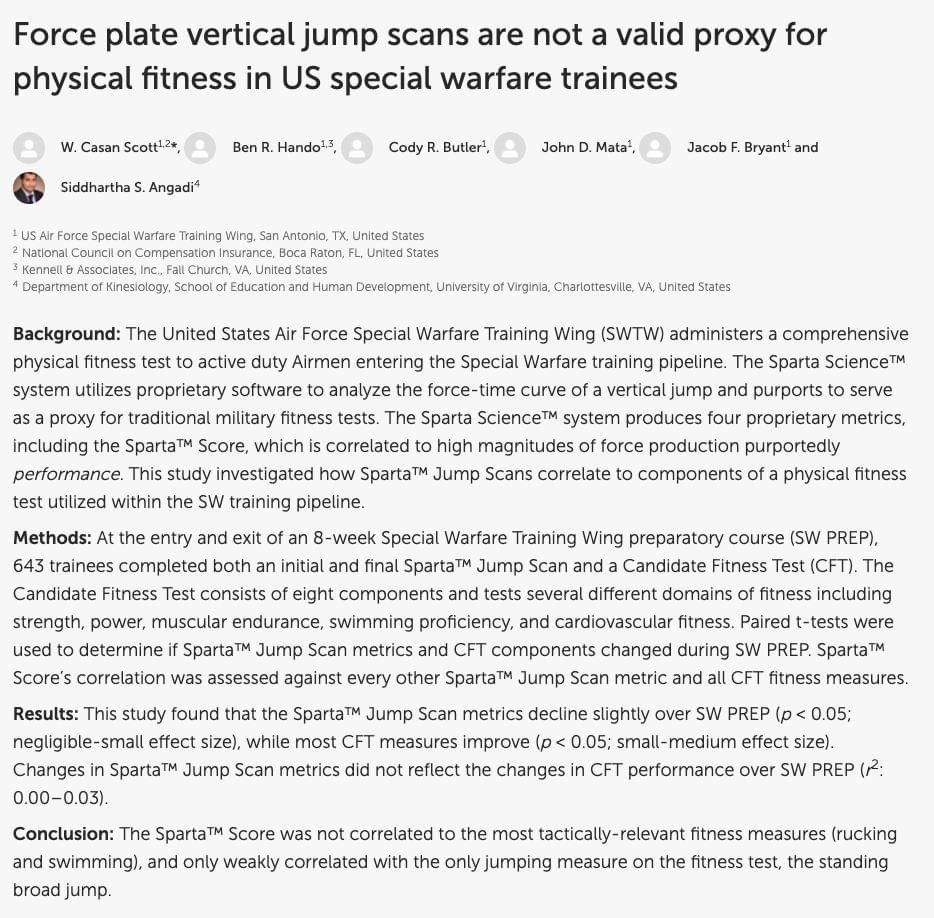
The Research Flight is the only embedded research team in the DoD, tasked with supporting the Special Warfare Training Wing with data driven decisions to identify trends, maximize the effectiveness and reduce injuries within the pipeline.
Read the full article here.
ARLINGTON, Va. (AFNS) —
Air Force Chief of Staff Gen. CQ Brown, Jr. approved new Air Force combat dive badges and associated wear criteria for Airmen who have been wearing the Navy scuba badge.
Airmen who have graduated the Air Force Combat Dive Course are now authorized to wear the new Air Force-specific qualification badges for divers and diver supervisors as soon as they become available in Army and Air Force Exchange Service stores.
“Air Force combat divers are essential to both combat and austere rescue situations,” said Maj. Gen. Charles Corcoran, Deputy Chief of Staff for Operations. “Having our own service-specific qualification badge accurately represents our unique capability to augment missions with any sister service component, and most importantly, highlights our member’s heroic actions to conduct rescue and retrieval operations to ensure no one gets left behind.”
The Air Force Combat Dive Course was established in January 2006 at Naval Support Activity Panama City, Florida. Prior to the establishment of the AFCDC, Air Force personnel had to attend the U.S. Army Combat Diver Qualification Course or U.S. Marine Combat Diver Course to earn combat diver qualifications.
Upon graduation, graduates were awarded the Navy Scuba qualification and badge, even though the Navy-designed badge does not accurately represent Air Force combat diver capabilities.
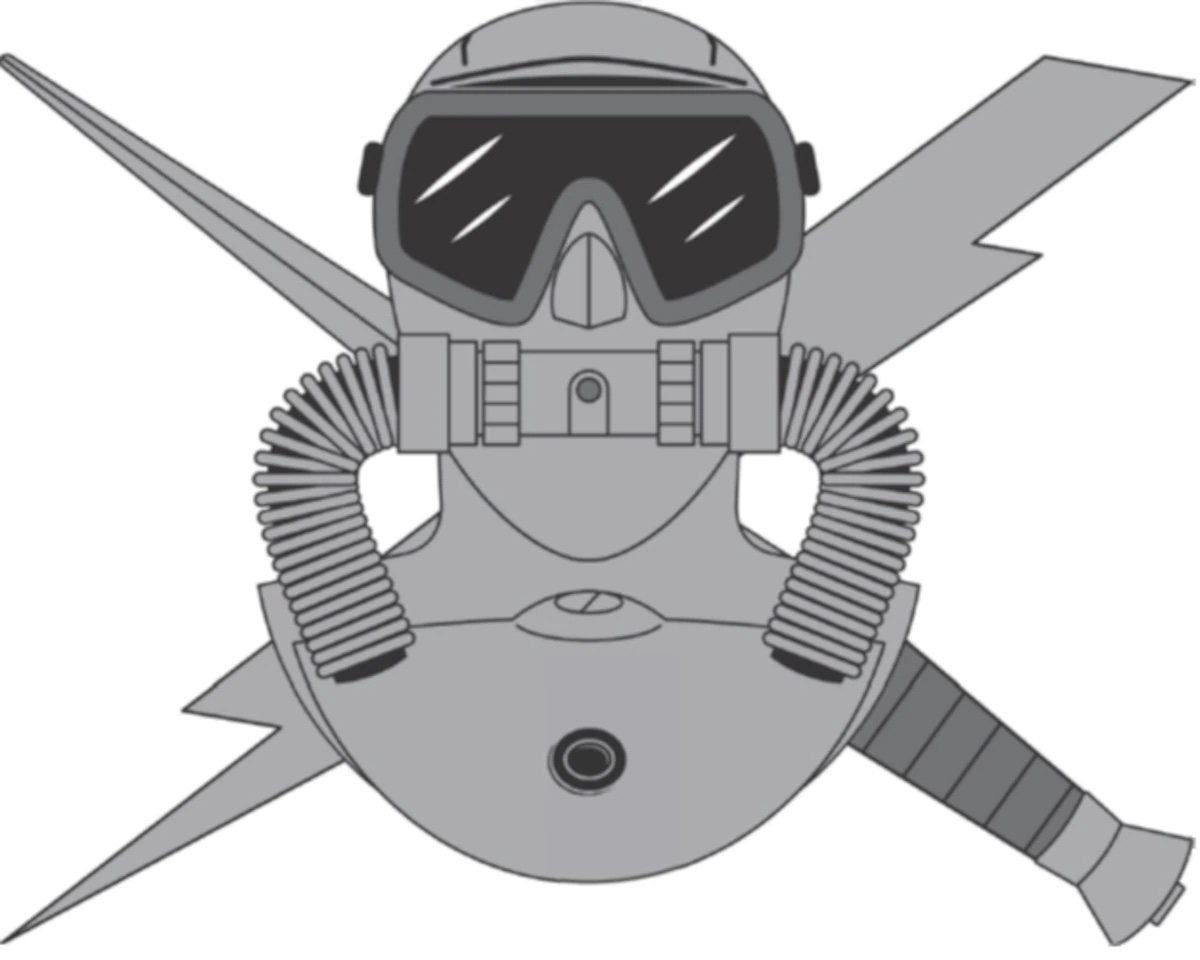
The Air Force Combat Diver badge is pictured. (U.S. Air Force graphic)
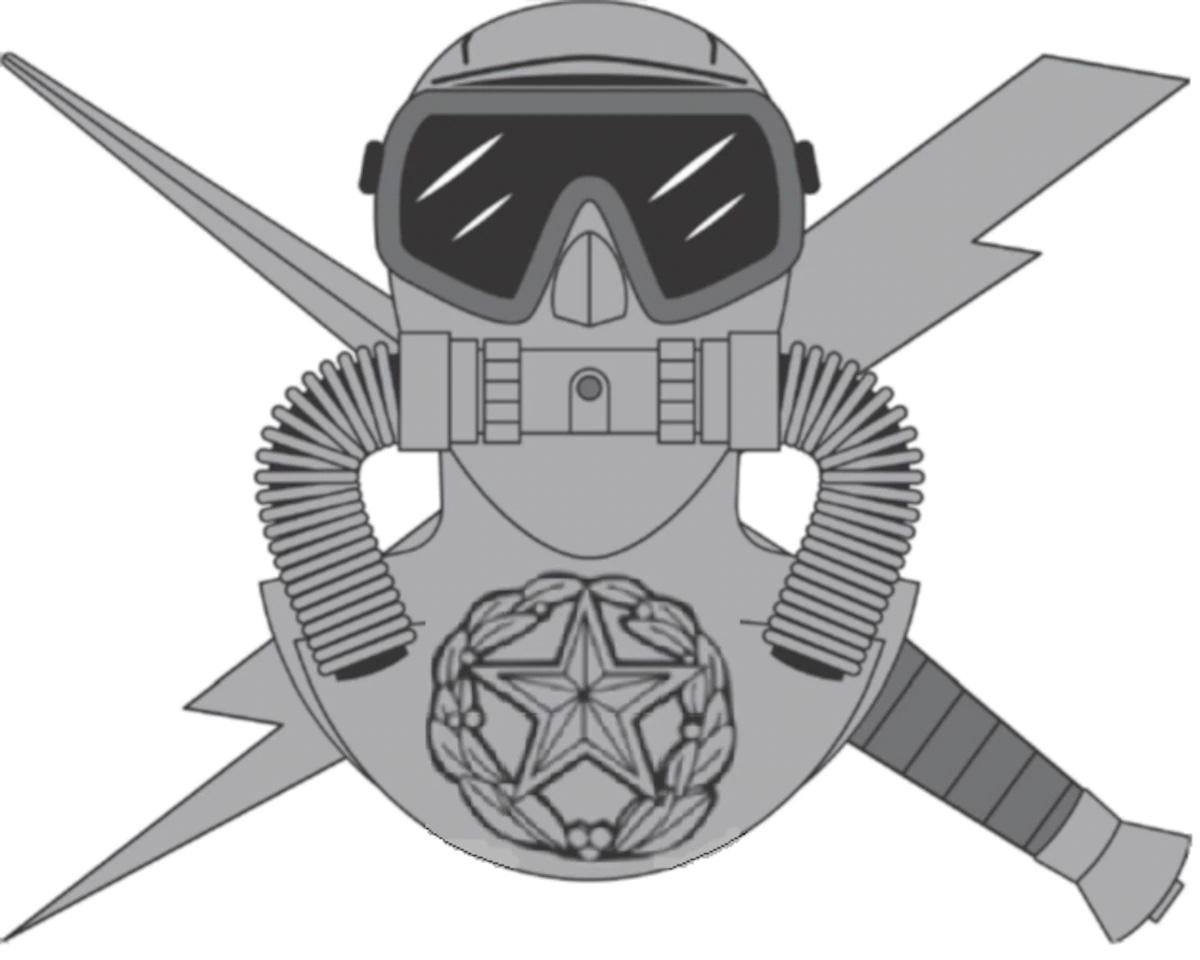
The Combat Dive Supervisor badge is pictured. (U.S. Air Force graphic)
“Navy scuba divers are trained for submarine and salvage diving,” said Senior Master Sgt. Christopher Uriarte, Air Force Command Dive Program manager and diver. “In contrast, U.S. Air Force combat divers are trained in the fundamentals of underwater tactical diving for insertion, extraction, and maritime rescue and recovery operations.”
These fundamentally different qualifications drove the requirement to establish a separate and distinct qualification badge for Air Force members and follows the precedent of other military branches replacing the Navy scuba badge with their own.
The new badges were developed by 350th Special Warfare Training Squadron Detachment 1 personnel. Two levels are authorized: Air Force Combat Diver, with a closed-circuit rebreather and Air Force Combat Dive Supervisor, identified by a traditional star and wreath on the badge, positioned on the rebreather.
Eligibility for wear of the respective badges is approved for graduates, both officer and enlisted, who have completed a Combat Diver or Combat Dive Supervisor course authorized in accordance with AFI 10-3504, Air Force Dive Program, paragraph 3.7.
The Air Force combat dive badges will be worn in accordance with AFI 36-2903, Dress and Personal Appearance of Air Force Personnel, guidance for wear of Miscellaneous Badges.
The textile badges are expected to be available in AAFES by the end of October 2022. The metal badges are currently in pre-production development.
Secretary of the Air Force Public Affairs
Joint Base San Antonio-Lackland, Texas. —
Those who go to war together must live and train together, according to the philosophy behind the Air Force’s Special Warfare Training Wing here, which prepares operational Airmen in seven career specialties.
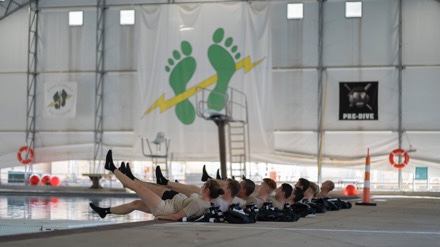
Modified facilities were built at the SWTW to ensure appropriate levels of privacy for mixed-sex cohorts of trainees at the Special Warfare Candidate Course, the course of initial entry for those who want to become Air Force Special Warfare Airmen.
These mixed-sex facilities include open-bay dormitories where male and female trainees bunk together, equipped with specially designed mixed-sex locker areas to incorporate individual shower rooms and restrooms with privacy for each trainee.
“Fostering an environment of inclusion is an imperative for the SWTW,” said Col. Nathan Colunga, SWTW commander. “The mixed-sex facilities built at our candidate course, where we first welcome Special Warfare Airmen, are only the beginning for the SWTW. The larger strategy is to build mixed-sex facilities throughout the entirety of the SWTW footprint, across the nation where every trainee, regardless of gender, is afforded the same level of privacy.”
In 2015, the U.S. Air Force began the process of integrating women into the AFSPECWAR career fields previously closed to them. The construction of the mixed sex facilities marks a positive step in the wing’s progress.
For Air Education and Training Command and 2nd Air Force, the process of broadening the pool of recruits for instructors and trainees in the Air Force’s technical-training pipelines is a top priority.
“We continuously struggle to recruit enough people who have the potential to meet our standards in Air Force Special Warfare,” said Maj. Gen. Michele Edmondson, 2nd Air Force commander, who oversees basic military training and the majority of non-flying technical training for AETC.
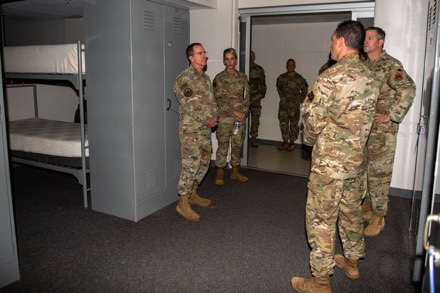
“I want to leave no stone unturned,” she said. “We need to be more deliberate about bringing in anyone who has the propensity to serve in these career fields and meets the standards it takes to graduate.”
The SWTW has graduated five female AFSPECWAR Airmen to date and continues to see the benefits of the mixed-sex integration efforts. There are currently two female trainees in the SWTW pipelines and continued efforts to fully integrate facilities for all sexes will ensure further diversity, inclusion and integration.
One of those graduates is Capt. Lauren Laffosse, a tactical air control party officer who is currently the chief of force integration at 2nd Air Force.
“My focus is not just on women in the special warfare pipelines,” said Laffosse. “I look at all under-represented groups and my job is to help remove barriers and ensure equitable processes across all career fields trained in 2nd Air Force.”
Laffosse participates first-hand in training courses to discover ways to make instructor and training opportunities available to a wider range of potential recruits.
“I go into training environments alongside students to observe and experience things personally,” she said. “My experience as a TACP enables me to understand the operational and training requirements so that we’re not changing the standards.”
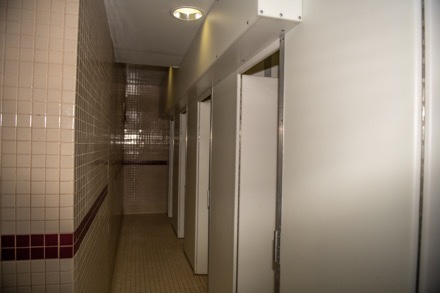
One example Laffosse cited was a lack of female restrooms or changing areas in facilities where AFSPECWAR candidates train, something the SWTW is working to rectify.
“We need to negate the unintentional barriers that prevent people from being on the team,” said Edmondson. “I believe it is a national imperative that we look at the future fight and ensure we have the right operators available to be able to assemble the proper team required to meet an evolving mission set that looks different in the future than it has in the past.
“If we don’t appeal to all demographics to join these career-fields, we are missing a huge portion of the available talent our nation has to offer,” she said. “We need to entice anyone who can meet the community’s standards.”
For the SWTW, the future of training will be completely mixed-sex integrated.
The SWTW aquatics training center set for completion in August 2023 will be fully equipped for mixed-sex training. When complete, the $66.6M aquatics training center will accommodate training for more than 3,000 AFSPECWAR trainees annually by incorporating a full range of special operations training scenarios.
The 76,000 square-foot center will feature mixed-sex restrooms, locker rooms, and showers, as well as two enclosed climate-controlled indoor pools of varying depths geared to meet the training needs for the Air Force’s global combat operations.
“The foundation we set today at the SWTW will produce the operators of the future who will compete, deter, and win the future high-end fight against peer and near-peer adversaries,” said Colunga. “We must ensure that these operators, who begin their careers in our pipelines, are able to reach their full potential and are not limited by the barriers of the past to then form the lethal and inclusive APFSPECWAR teams we need.”
Members of SWTW provide initial training for all U.S. Air Force Special Warfare training specialties, to include combat controllers, pararescue, special reconnaissance and tactical air control party Airmen.
To learn more about AFSPECWAR Airmen or other U.S. Air Force Special Warfare career opportunities, go to: www.airforce.com/careers/in-demand-careers/special-warfare.
By 1st Lieutenant Xiaofan Liu
Special Warfare Training Wing
JOINT BASE SAN ANTONIO-RANDOLPH, Texas —
Historically, recruiting Airmen for Special Warfare career fields has been as tough as the Airmen who fill its ranks. So when Air Force Recruiting Service entered fiscal 2022, it organized a team in its Operations division here to inspire, engage and recruit future SW Airmen.
That team, called the SW branch, is reporting some progress despite headwinds that have characterized one of the toughest recruiting years in Air Force history for all career fields.
The selection process and relatively small size of the Air Force Special Warfare community compared to other career fields make members an elite class of warriors. So AFSPECWAR is lesser known compared to its counterparts in the Army, Navy and Marine Corps.
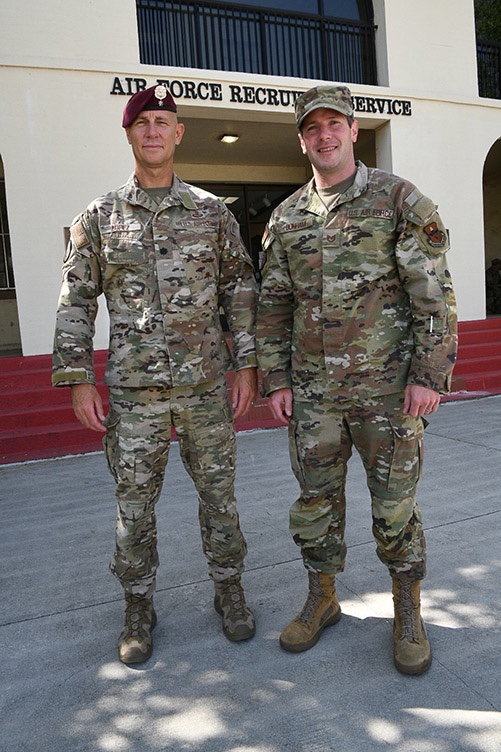
“We needed to share the story of our community, its feats of heroism and no longer be ‘quiet professionals’,” said Lt. Col. Joe Lopez, SW branch chief. The former Army Ranger and current Air Force combat rescue officer by trade, designed the 2022 plan to recruit aspiring Airmen for AFSPECWAR from within the Air Force as well as non-prior service future Airmen.
Unlike most branches at the AFRS headquarters, SW branch members visited universities and military installations where they met with all demographics while local Air Force recruiters focused on traditional recruiting methods. Overall, SW branch is searching for people with grit and determination who have the aptitude, mentality and physicality to endure the requirements of entering the SW career fields.
Those career opportunities include Combat Rescue, Special Tactics, and Tactical Air Control Party officer career fields as well as Pararescue, Combat Control, Special Reconnaissance, and Tactical Air Control Party enlisted career fields. In addition, the branch also supports recruitment for enabler Air Force Specialty Codes such as Survival, Evasion, Resistance, and Escape, along with Explosive Ordnance Disposal enlisted career fields.
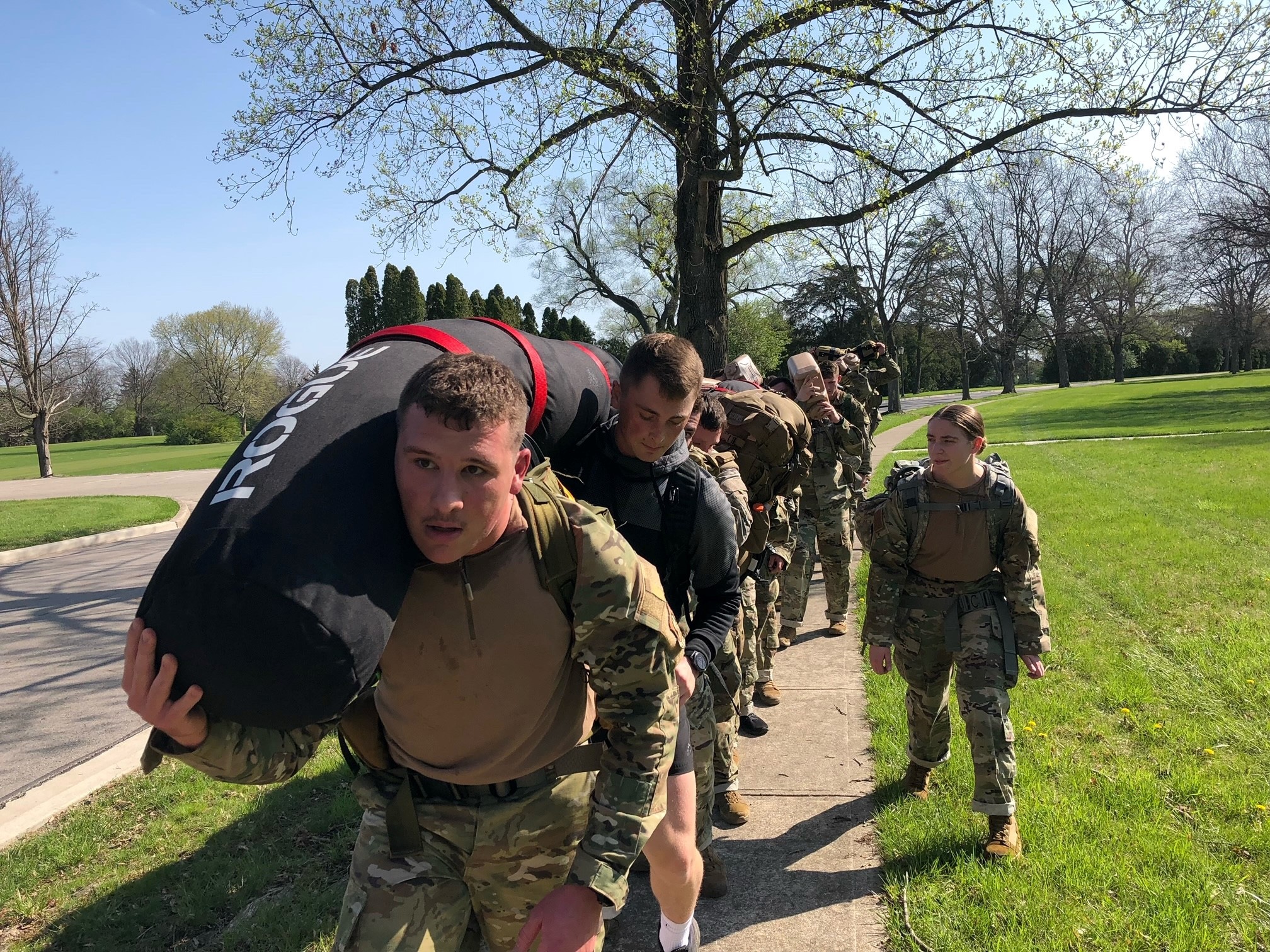
Specific to enlisted career fields, qualified applicants will enter the Special Warfare Operator Enlistment vectoring program designed in 2020 to streamline the enlistment process. This begins in the pre-accession phase where recruiting development teams identify potential SW candidates and begin the process to prepare them for the rigors of the Special Warfare training pipeline and later, their designated career field.
AFRS and the AFSPECWAR community aim to create a competitive model in the SWOE “Development Pool” where interested civilians strive to be sufficiently mentally and physically fit so they can be the next AFSPECWAR operators.
Part of the need and desire to move out more aggressively than before is because the Air Force has struggled to meet its goal for enlisted and officer ranks in AFSPECWAR.
“The intent of these outreach efforts is to establish rapport with interested applicants, give them insight on how to train smartly, and expose them with introductions to some of the physical challenges that they may experience while being screened and assessed so they’re better prepared mentally to overcome adversity during those trying times,” Lopez said. “All too often, we hear ‘I didn’t know the Air Force had this capability,’ so we are working to inspire, connect, develop and recruit future candidates into AFSPECWAR before they ship to Basic Military Training.”
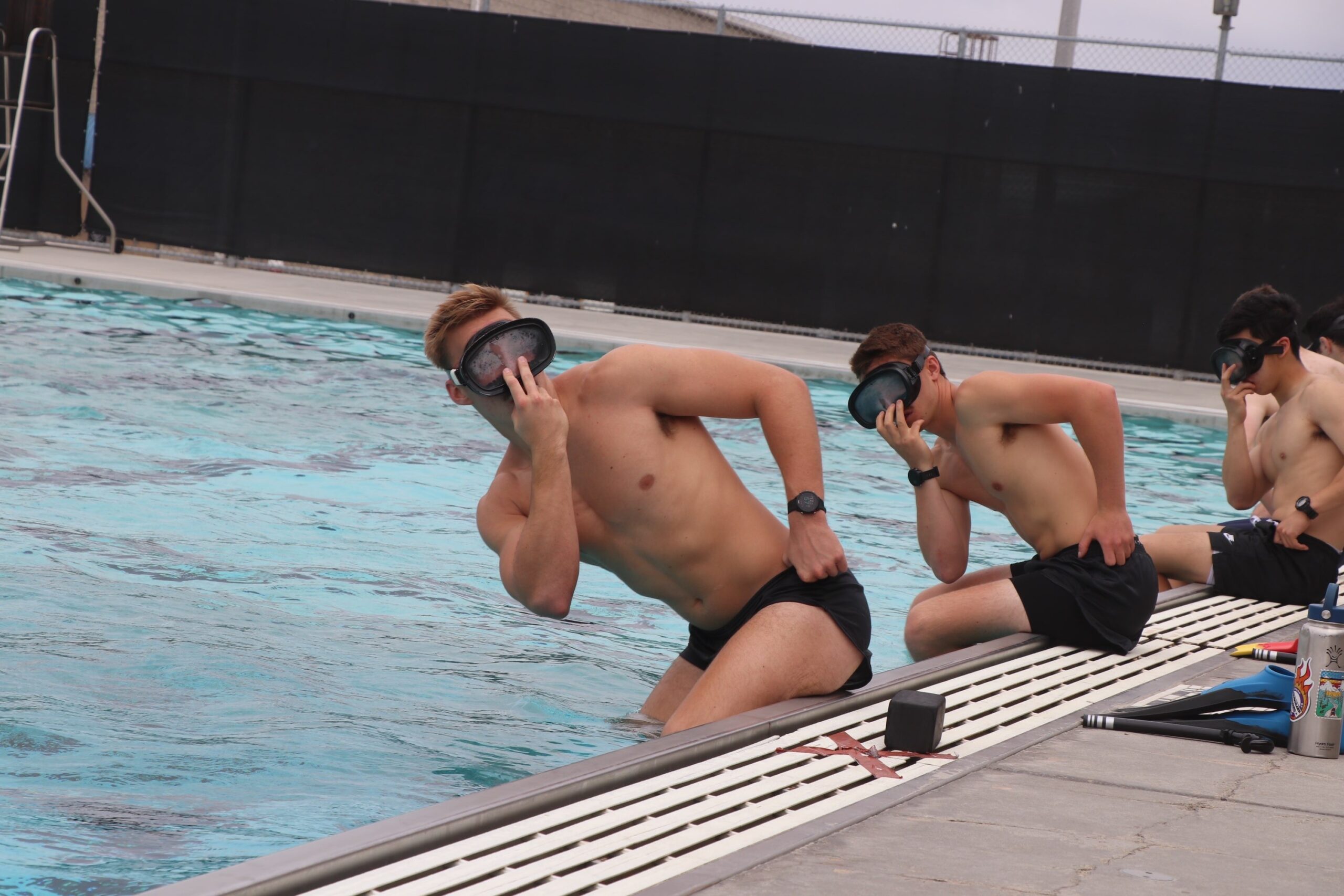
Lopez’s team includes veteran recruiters who are familiar with the challenges of recruiting SW Airmen. “Recruiting special warfare Airmen for the Air Force is very difficult, because most civilians have only heard about Navy SEALs and Green Berets,” said Master Sgt. Kenneth Babb, SW branch superintendent and former SW recruiting flight chief. “Few have ever heard about this very small community of elite warriors inside the Air Force. We know that there are people out there who want to serve in the military as a ground combatant and we need them to know that there are opportunities for them in the Air Force.”
Circumstances dictated the need for a new, innovative approach and plan that synchronized the worldwide effort to recruit SW Airmen.
“This is the very reason AFRS stood SW branch up and we hit the ground running,” Lopez said. “In our first year alone, we engaged with almost 1,300 cadets in 42 different Air Force ROTC detachments to recruit potential special warfare officers,”
The SW branch also visited 10 different Air Force bases and met with more than 200 Airmen to conduct in-service recruiting for enlisted Airmen and officers.
Simultaneously, Lopez and his team supported initiatives to elevate public awareness and engage new enlistees. The SW branch helped AFSPECWAR obtain trademark approval for a new logo and was involved in the Air Force’s decision-making process to increase SW initial enlistment bonuses from $15,000 to $50,000.
“Our main goal is to streamline the process from recruiting America’s highly talented applicants to enter the Air Force and begin their journey, in the hopes of becoming an AFSPECWAR Airman,” Lopez said. “We truly believe that if we can improve AFSPECWAR’s brand awareness and promote the opportunities special warfare careers offer, then recruiting will be much easier.”
SW branch members said that, overall, AFSPECWAR’s most difficult challenge is recruiting SW Open Enlistment candidates. SW recruiters are spread throughout the U.S. where they need to bring in roughly 1,000 non-prior service recruits each year.
“I was blown away by the effort a recruiter puts into shipping a SWOE candidate,” said Master Sgt. Matthew Voss, a SERE specialist assigned to the SW branch. Before Voss was assigned to AFRS, he served as a flight chief for the SERE Specialist Orientation Course at Joint Base San Antonio-Lackland’s Chapman Annex. He is the first SERE specialist assigned to AFRS.
“The Airmen of AFSPECWAR are absolutely critical when a conflict kicks off and we need to ensure that we have sufficient Airmen ready for the next conflict,” Voss said. “That all starts with recruiting.”
By Air Force Recruiting Service Public Affairs, Air Force Recruiting Service